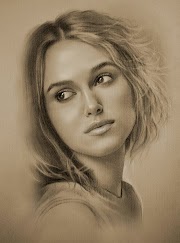We know there are many variations of photography, and you have most likely heard of fine art photography too - but what is it, and how do you do it? There are some great tools, tips, and tricks that can elevate your work. Let’s take a deeper look into fine art photography.
What is Fine Art Photography?
It might be one of the most challenging forms to define. When discussions happen around fine art, you will talk about the techniques, what works, what doesn’t, the idea behind the piece - and of course, the details.
Fine art is about the emotion or message that the artist is trying to convey. It might be a big statement, or it might be nuanced.
There will be many techniques in the work; it will demonstrate the artist’s skill set. Each of the pieces the artists produce will be within the same method and medium, and when the work is shown, it will feel cohesive.
The vision will come to fruition with a body of work that conveys a message and has uniformity.
The cherry on the cake is the statement from the artist. It will be a clear and concise supporting piece of text that shines a light on the collection’s intentions and reasoning.
The photos are more than pictures; they are pieces and collections of artwork. Fine art isn’t typically commissioned or impacted by external influence; it is produced from the photographer’s idea, vision, and creativity.
How can I produce a fine art collection?
You might be wondering then if you could produce a fine art collection? Surely it would be too tricky, and you’d need extra training?
Yes, it can be a challenge, and while extra learning would help - it isn’t always necessary.
Vision
What is the message or idea that you want to convey to the viewers of your work? What are you trying to tell them?
You must focus on areas you are interested in, which can give you a starting point. You already have an interest and a passion in an area, so you understand where the nuance and the story lies.
Passion can make for one of the most powerful ingredients in your photography.
Perspective
A single object can look different to everyone who takes a photo of it. But is the uniqueness in it?
Can you challenge the perceptions of people by taking the same photo as 99% of the population?
Using different tools, lighting, experimenting with post-process and textures can take a single, dull object and turn it into something incredible.
What is your perspective? How can you challenge your own perspective and improve your work?
Tools
Understanding your equipment and how you can bend the rules and push them to the limits can be an essential part of producing unique and exciting work.
But to bend the rules, you have first to understand what the ‘rules’ are and how your tools truly work.
Understand the principles of ISO, depth of field, shutter speed, and editing capabilities inside your camera.
Composition
Often what can take a bowl of fruit still life photo into the fine art category is the piece’s composition. Only when you understand the basic principles of the rules of photography can you break them most effectively.
Fine art photography isn’t clunky and usually isn’t accidental. It is the careful curation of an entire vision.
Composition rules of photography (for you to break).
The rule of thirds
Leading lines
The golden ratio
Frame within the frame
Diagonals
Fill the frame
Figure to ground
Pattern and repetition
Center dominant eye
Asymmetry and symmetry
Take the rules, understand them, practice them, and then learn to break them.
Exploration
Fine art photography explores theories, subjects, typical photography rules, light, color, and ideas.
Spend some time researching other fine art photographers and looking at their collections. This can give you an insight into style, editing, and the quality of the work.
You can also begin to understand the nuanced messages that can be woven into a collection. Fine art isn’t often heavy-handed with what it conveys, but it does do it well.
Editing
Capturing and delivering a perfect image straight from the camera isn’t always possible; however, you can take the image and craft it into the vision that you had in mind.
Spend time to understand the intricacies of editing and how you can elevate your images to get your vision across.
How you edit will change the entire look and feel of your work.
Fine art is a process, and creating a collection can take years of work. But it is worth it in the end.
“A good photograph is one that communicates a fact, touches the heart, and leaves the viewer a changed person for having seen it. It is, in a word, effective.”
— Irving Penn














.jpg)






0 Comments